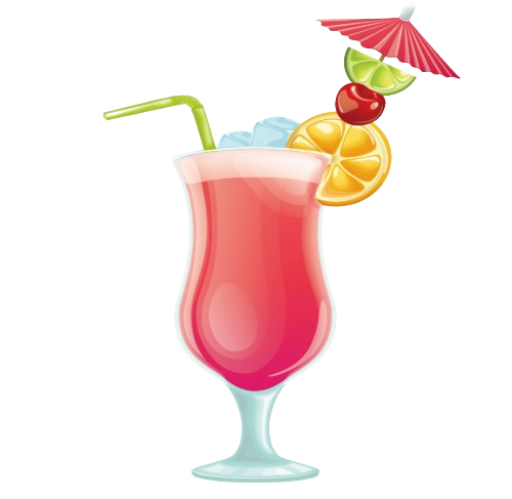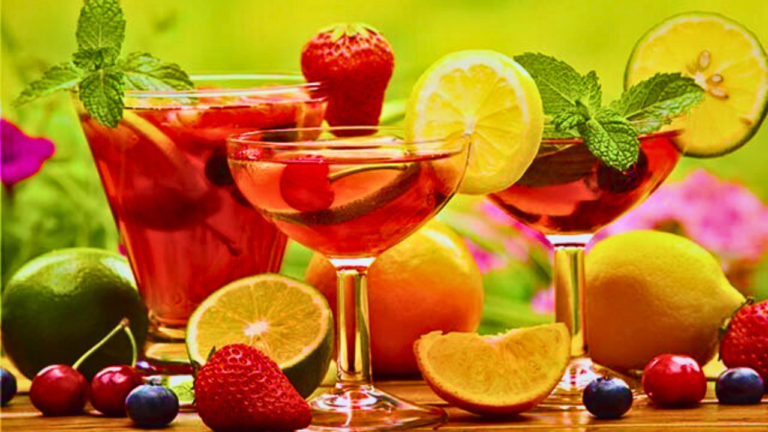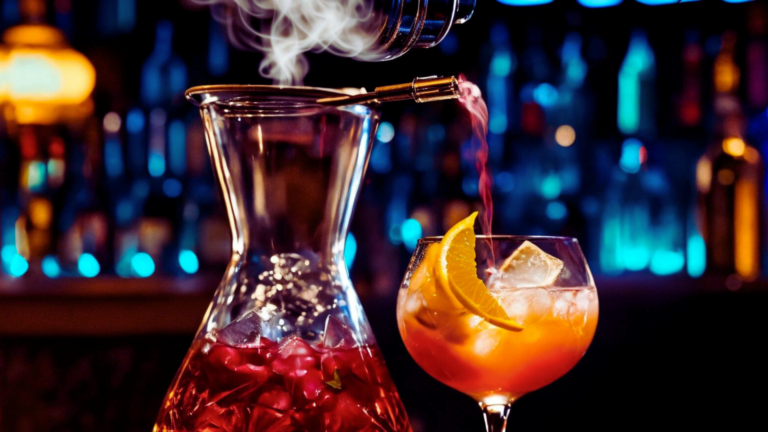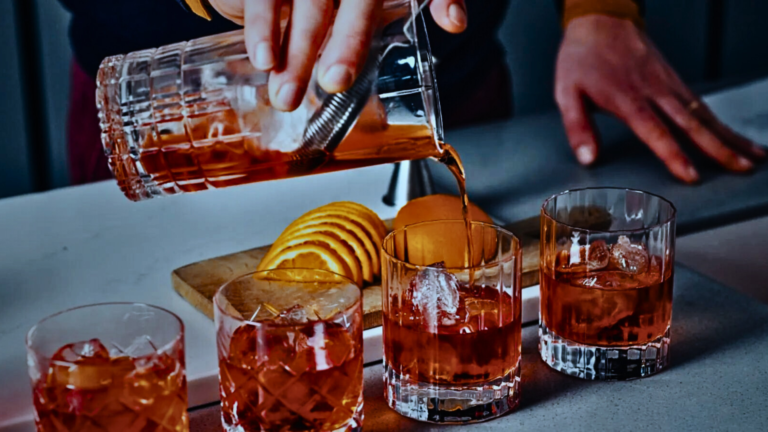How To Price Cocktails?
Welcome to this comprehensive guide on how to divvy up the perfect price for your cocktails. Whether you’re a seasoned mixologist at a high-end restaurant, a bar manager trying to maximize profitability, or even an amateur enthusiast wondering how cocktail pricing works, I’ve got you covered.
Crafting and pricing cocktails is truly an art. It fuses together creativity, business acumen, industry know-how, and a sprinkle of daringness for that special touch. So, sit back, sip on your favorite cocktail, and let’s dive into the world of pricing potions!
“The art of drink is a mysterious blend of science, nature, and the power of taste.”
The Components of Cocktail Pricing
The process of pricing cocktails is multi-faceted. A well-priced cocktail doesn’t just cover the cost of ingredients. It needs to account for overhead costs and labor and seek to meet a profit margin goal. It’s crucial to parse out these factors cogently to avoid underpricing or overpricing your cocktails, which can either eat into your profits or drive away customers. Here is a quick overview of the key components to consider:
- Cost of Ingredients: This is the direct cost of the ingredients used in the cocktail. Easy to keep track of, but shouldn’t be the only contributing factor in your pricing.
- Labor Cost: Don’t forget the time it takes to create the cocktails! From sourcing ingredients to masterfully mixing them, labor costs must be included.
- Overhead Expenses: These are cafe, bar, or restaurant running costs, like electricity, rent, and equipment.
- Desired Profit Margin: This is your ticket to running a profitable business. You decide this margin based on industry standards, your business plan and strategy, and your competition.
Now that we’ve laid the groundwork, let’s dive into each factor more deeply. After all, understanding each element is key to concocting the perfect cocktail price.
Read also: Is Cranberry Cocktail Good?
What factors should be considered when pricing cocktails?
When it comes to pricing cocktails, it’s not as simple as assigning a random dollar amount. Many factors come into play to determine an appropriate and profitable price. Let’s delve into what you should keep in mind when pricing your delightful concoctions.
Cost of Ingredients: Firstly and most importantly, consider the cost of the ingredients. This includes the spirits, mixers, garnish, and even the ice. When pricing, it’s essential to know the precise cost of each ingredient per serving. This forms the foundation of your cocktail price.
Labor Costs: Preparing a cocktail takes more than just the material ingredients. It involves the skilled labor of your bartending staff. Factors like how complex the cocktail is, the garnishing, and the time taken can heavily influence the price. Make sure to account for labor costs in your pricing strategy.
Glassware and Tools: The tools and glassware required to make and serve your cocktail are another cost consideration. Each glass, shaker, or strainer used contributes to the overall cost of producing a cocktail.
Overhead Costs: Overhead costs such as rent, utilities, licenses, and insurance must also be factored into the price of your cocktails. Although these costs are not directly linked to any single cocktail, they are still part of running a bar or restaurant.
Profit Margin: Pricing your cocktails doesn’t only mean covering your costs but also turning a profitable margin. This is your reward for doing business. The generally accepted gross profit margin in the bar industry is typically between 18% and 24%.
Perceived Value: The price of your cocktail should match its perceived value. High-quality ingredients, unique recipes, and exceptional presentation can increase a cocktail’s perceived value. This is where you can charge a premium price for a truly unique cocktail experience.
Ultimately, the right cocktail price is one that covers all costs, returns a profitable margin, meets the guest’s perception of value, and stands up to the competition in your market. That’s the sweet spot for pricing cocktails.
How can bars and restaurants determine the cost of ingredients for cocktails?
Figuring out the cost of ingredients for cocktails can seem like a daunting task, but with some organization and a little bit of math, you can master it. Primarily, there are two steps involved, both equally crucial: the calculation of individual ingredient costs and then the determination of the cost for each cocktail recipe.
Individual Ingredient Costs: Start by calculating the cost of each ingredient you use in your cocktails. Here’s how:
- Take the total cost of an ingredient (say, a bottle of rum) and divide it by the volume of the product (usually in milliliters).
- This will give you the cost per milliliter. For instance, if a 750-ml bottle of rum costs $15, then the cost per milliliter will be $15/750-ml = $0.02/ml.
- Use this method to ascertain the cost of each ingredient, including liquor, mixers, fresh produce, and garnishes.
Calculating Cocktail Recipe Costs: Once you’ve figured out the cost of each ingredient, the next step is to evaluate the cost of each cocktail.
- List down all the ingredients required for a cocktail and their respective quantities in milliliters.
- Multiply the required quantity of each ingredient by its cost (which you’ve already worked out in step 1).
- Sum up the costs of all ingredients to get the total cost of your cocktail. Don’t forget to add in the cost of items like straws, napkins, or other extras you typically provide with a serving.
Remark: Remember, the goal is to keep this cocktail cost as a certain percentage of your selling price, typically under 30%.
Having a well-maintained spreadsheet will greatly assist in these calculations, allowing you to adjust ingredient quantities or components as prices change. This practical approach can help you maintain profitability without compromising customer satisfaction.
Read also: How Do You Add Dry Ice To A Cocktail?
What pricing strategies are commonly used in the bar and restaurant industry?
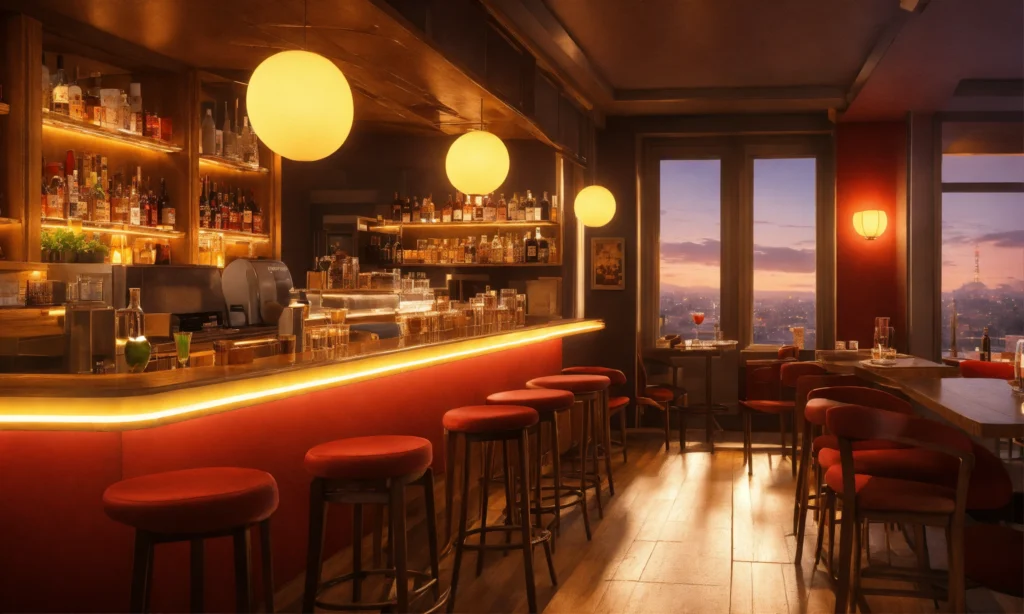
If we think carefully, pricing strategies for cocktails can be as diverse as the drink creations themselves. While it is certainly true that pricing should adequately cover the cost of ingredients and labor, there’s much more to it than just numbers. It’s all about finding a balance that not only keeps your business profitable but also keeps your customers coming back for more.
There are a few common pricing strategies that bars and restaurants might employ. Here are a few you may find intriguing:
- The Standard Mark-Up: This is the most common approach. You determine the cost of your ingredients, then apply a certain percentage markup to achieve your selling price. It’s simple, straightforward, and ensures you’re covering costs while making a profit.
- Tiered Pricing: With tiered pricing, different categories or “tiers” of cocktails have different price points. Essentially, some types of drinks might be more expensive than others based on their ingredient costs, preparation time, or popularity.
- Dynamic Pricing: Quite similar to flights or hotel rooms, prices fluctuate depending on the time of day, day of the week, season, or other factors. Consider offering happy hour specials or discounted prices during slower times to attract customers.
- Psychological Pricing: This strategy might be as effective as it is subtle. Pricing drinks at $9.99 rather than $10, for example, can have an impact on a customer’s perception of value.
These strategies are best considered guides rather than hard-and-fast rules. Each bar or restaurant will have its own unique circumstances, so it’s important to adapt and experiment until you find the strategy that works best for your business model.
Next, we’ll discuss the influence competition has on pricing your cocktails. Striking the perfect balance between staying competitive and ensuring profitability is no easy task, but it’s a vital part of a thriving business!
What role does competition play in pricing cocktails?
Competition, my dear reader, holds a significant influence on pricing cocktails. It may surprise you how closely you’ll need to watch what others are doing. Not for any sinister reason, but simply to stay in the game, competitively speaking.
Why, you ask? Well, the simple truth is that customers are smarter and savvier than ever before. They’re aware of price points and can easily compare your offerings to those of your competitors. If your prices are notably higher without offering additional value, they might simply walk out your door and into the neighbouring bar.
So, how do we navigate this? Knowledge of your competition’s prices can help you set fair, competitive prices. This isn’t about undercutting or matching their prices, dime for dime. It’s about pricing your cocktails in a way that provides clear, justifiable value for your customer base while also delivering a good return for you. Keeping up with your competitors also helps you understand shifting market trends and customer behaviours.
But here’s the thing: you’ve got to do more than know your competition’s prices; it’s equally crucial to know their value proposition. For instance, if a competitor is charging a premium but offers unique ingredients, or if they’re known for their bespoke cocktail creations, your pricing strategy can’t just be about offering cheaper drinks. You’d need to address how your offerings are different and better, then price accordingly.
Look out for competitor pricing, but remember that your focus should primarily be on your business’s strengths and offerings.
Here are a few quick tips to help you out:
- Conduct regular market surveys.
- Visit competitor venues to understand their customer experience and compare it to yours. It might give you ideas on value addition, not just price reduction.
- Use online platforms and social media to keep track of your competitor’s menu changes and pricing strategies.
- Understand the demographics of your competition’s clientele. This can help you gauge your pricing strategies better.
In conclusion, while competition plays a substantial role in cocktail pricing, it should serve more as a reference point than a determining factor. The essence of your pricing strategy should always reflect the value of your product and the cost of production. After all, the most successful bars and restaurants aren’t necessarily the cheapest ones—they’re the ones that provide an experience worth coming back for!
Are there any legal considerations when pricing cocktails?

Without a doubt, legal considerations are a crucial part of pricing cocktails. Failure to comply with the relevant regulations could lead to serious penalties and potentially even jeopardize your business. So let’s delve into some areas you need to pay attention to when pricing your cocktails.
Minimum Pricing Laws: Certain jurisdictions have laws that set a minimum price for alcoholic beverages, often based on their alcohol content. It’s essential to be familiar with these laws in your location to avoid underselling your cocktails.
Happy Hour and Promotional Pricing Regulations: Regulations surrounding promotional pricing of alcohol, such as during happy hours, vary widely. Certain locales may prohibit discounting alcoholic beverages at specific times, while others may place restrictions on the type and scope of promotions allowed.
Tax Requirements: Depending on your location, different or additional taxes may apply to alcoholic beverages. These could include excise duty or special sales taxes, which need to be incorporated into your pricing strategy.
Wondering where to go for this information? A good starting point is your local Alcoholic Beverages Control (ABC) board or an attorney who specializes in liquor laws. They can provide accurate and up-to-date information on the legal requirements for pricing cocktails in your area.
That said, remember that laws and regulations can change. It’s therefore crucial to regularly check for updates or changes where you operate. After all, maintaining legal compliance is just as important as serving a delicious cocktail!
Conclusion
In conclusion, pricing cocktails starts with understanding the basic building blocks, including the total cost of ingredients, overhead costs such as labor and utilities, and factoring in desired profit margins. Different venues and events may require flexible pricing strategies, considering factors such as your target audience, competition in the local market, and special occasions or promotions.
While setting the right price may seem like a daunting task, the payoff can be immeasurable. Compelling, fairly priced cocktails can boost your reputation, draw in customers, and increase your bottom-line revenue. In this highly competitive industry, it’s essential to set your cocktail prices strategically to run a profitable business.
One must also bear in mind the legalities associated with selling cocktails, including taxation and applying fair pricing. So go forth and conquer, not forgetting that the ultimate aim of offering an impressive cocktail list is not just about making money but about delivering a memorable experience to your customers.
Remember, careful pricing takes both time and understanding. But once done correctly, it can truly be the secret ingredient to your establishment’s success. Cheers!
Read also: Which Juice Is Best For Cocktails?
FAQs
Should cocktail prices be the same at every bar or restaurant within the same brand?
This depends on various factors like location, overhead costs, and licensing fees. For instance, a bar in a high-rent district might price its cocktails higher than one in a less costly area to cover the additional expenses.
Why do craft cocktails cost more?
Craft cocktails often involve premium spirits and fresh, specialty ingredients. The preparation can also be time-consuming. These factors contribute to a higher price compared to standard mixed drinks.
Can lowering cocktail prices attract more customers?
Lowering prices can attract more customers in the short term, but if your costs exceed revenues, it can quickly become unsustainable. It’s crucial to find a balance that ensures profitability while appealing to consumers.
Do seasonal ingredients affect the pricing of cocktails?
Yes! Seasonal ingredients can influence the price of cocktails. Fresh, local produce might be cheaper during its peak season, allowing you to create special drinks at a lower cost. Conversely, out-of-season or imported ingredients can increase the price.
How can I communicate price changes to regular customers?
Transparency is key when changing prices. Inform your customers gently and ensure them the change is to maintain the quality they’ve come to expect. You can use signage, menus, or personally explain the adjustment to regulars.
Why do some bars offer happy hour discounts?
‘Happy hour’ is a marketing strategy intended to attract more customers during slow periods. By offering discounted drinks, businesses can increase their customer volume and potentially upsell them on food or more expensive beverages.
How often should I review and adjust my cocktail prices?
It’s recommended to review cocktail prices at least every six months; this accounts for seasonal changes and market shifts. However, if there are significant changes in ingredient prices or other costs, it might require a more frequent review.
How should I price non-alcoholic cocktails?
Non-alcoholic cocktails, or ‘mocktails,’ still involve recipe creation, labor, and ingredient costs. Therefore, they should be priced appropriately. However, considering they lack alcohol, they will generally be cheaper than their alcoholic counterparts.
Is it alright to charge more for cocktails if I use branded alcohol?
Yes. Premium or branded spirits usually cost more, so it’s acceptable to pass some (or all) of this cost onto the customer. Offering a ‘house’ and ‘premium’ version of cocktails can cater to different customer preferences and budgets.
Does offering a larger cocktail mean it should be priced double?
Not necessarily. A larger cocktail doesn’t mean just doubling the ingredients; it often involves adjusting the recipe for a harmonious blend. Also, customer perception and willingness to pay play a role. It’s common to price larger cocktails higher, but not double the regular size’s price.

Hello, friends! I’m Tom Elba, the driving force behind cocktailscape.com, your virtual hub for all things cocktails. If you have a passion for mixology or simply enjoy sipping on a well-crafted drink, then you’ve landed in the right place.
At Cocktailscape, I’m dedicated to sharing my love for the art of cocktail-making through tantalizing recipes, expert tips, and vibrant stories from the world of mixology. Whether you’re a seasoned bartender or an enthusiastic home cocktail enthusiast, there’s something here for everyone.
From classic concoctions like the Old Fashioned and the Martini to innovative twists and modern creations, I’m here to inspire you to shake, stir, and sip your way through a world of flavor.
But Cocktailscape is more than just recipes—it’s a celebration of culture, creativity, and community. I delve into the history behind iconic cocktails, explore emerging trends in the industry, and spotlight talented bartenders from around the globe.
So whether you’re looking to expand your cocktail repertoire, host the perfect soirée, or simply unwind with a refreshing drink after a long day, Cocktailscape has got you covered. Cheers to endless possibilities and unforgettable sips—let’s raise a glass together at cocktailscape.com!
